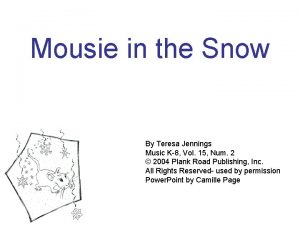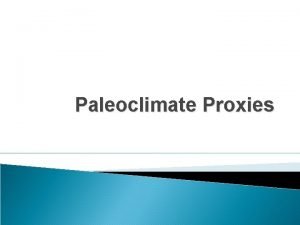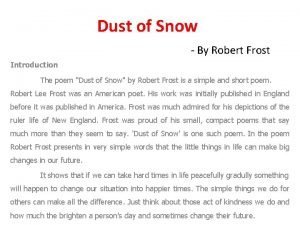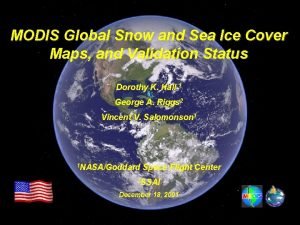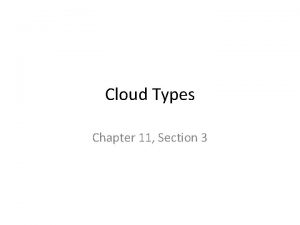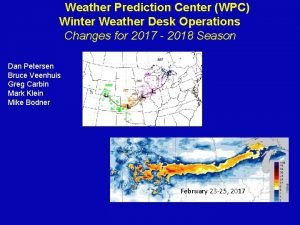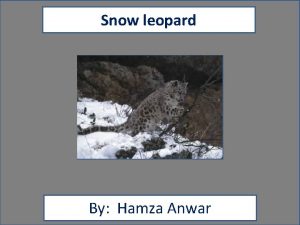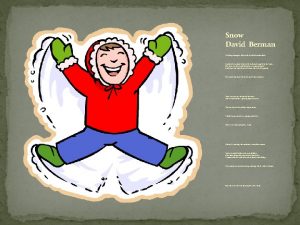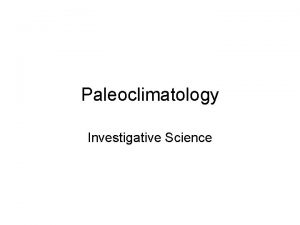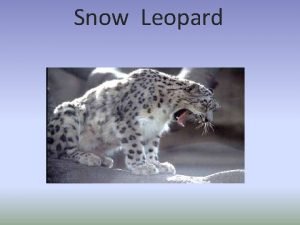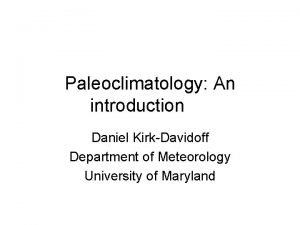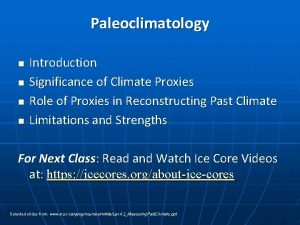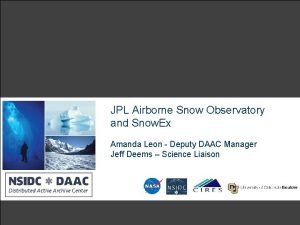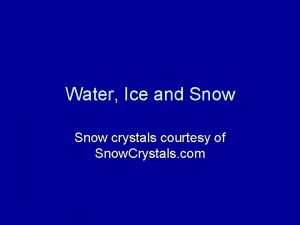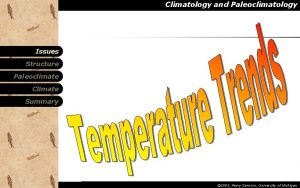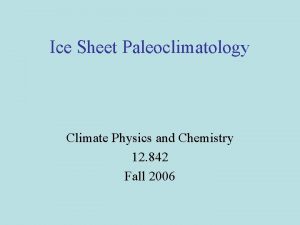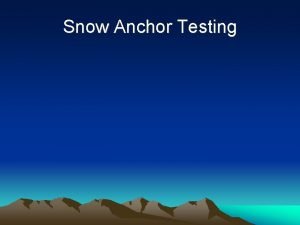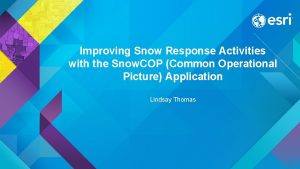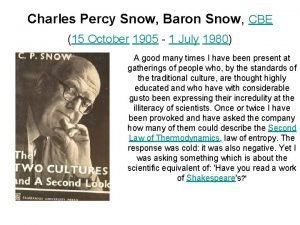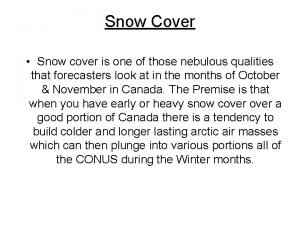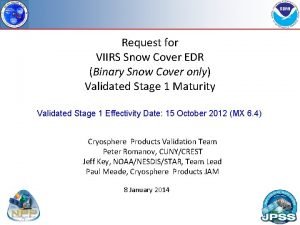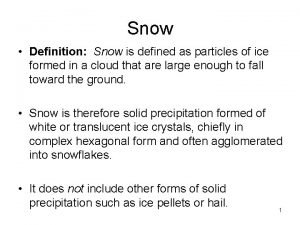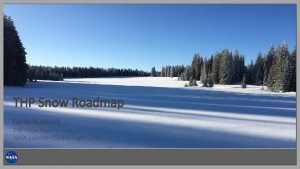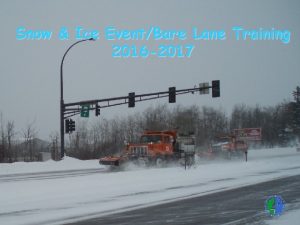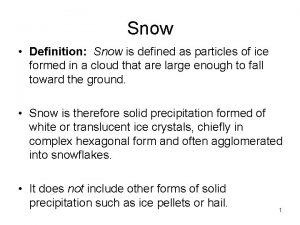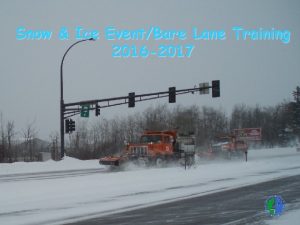Introduction to Paleoclimatology n n n Snow and



























- Slides: 27

Introduction to Paleoclimatology n n n Snow and Ice Report Snow Photos Significance of Climate Proxies Types of Proxies Limitations and Strengths Ice Cores Selected slides from: www. mun. ca/geog/courses/rwhite/Lec 4. 2_Measuring. Past. Climate. ppt

Snow/Ice Report n n https: //climate. rutgers. edu/snowcover/ https: //nsidc. org/arcticseaicenews/ http: //climate. appstate. edu/Data/Met/EVERNET/Balcony_Col_Wind_Temp. png http: //www. skimountaineer. com/Mtn. Web. Cam s/Rainier. Mtn. Web. Cams. html? size=med&telemetry=true


9 December 2017 MRR Summary

0100 – 0200 UTC 9 Dec 2017

0200 – 0300 UTC 9 Dec 2017

0300 – 0400 UTC 9 Dec 2017

0400 – 0500 UTC 9 Dec 2017

0500 – 0600 UTC 9 Dec 2017

1400 – 1600 UTC 9 Dec 2017

1600 – 1700 UTC 9 Dec 2017

0000 – 0200 UTC 10 Dec 2017

0200 – 0300 UTC 10 Dec 2017

Driving Question Ø How and why do scientists reconstruct the climate record prior to the instrument era? © AMS 14

Reconstructing Past Climates: Why and How? Ø Climate reconstruction l l l © AMS Improves our understanding of environmental response to climate variability and climate change Provides perspective on current climate Requires identification of a link between quantitative climate forcing and environmental response 15

What kinds of climate proxies can be used to estimate surface temperatures (last 2000+ years)?

What kinds of climate proxies can be used to estimate surface temperatures (last 2000+ years)? Ø Ø Ø Ø Ø Tree rings Corals Ocean and lake sediments (varves) Cave deposits (speleothems) Ice cores Pollen deposits Packrat middens Glaciers Documentary evidence (historical records, paintings, etc. )

Climate Proxies Ø Which of the climate proxies excites you the most? Why? © AMS 18

How are proxy data used to reconstruct climate? For most proxies, statistical techniques are used to define the relationship between the proxy measurements and the concurrent instrumental records. Ø Then, this relationship is used to reconstruct the past climate from the remaining proxy data. Ø

Steps Involved Collect proxy data Dating the proxy data (e. g. , matching growth rings of trees to calendar year) Ø Calibration – usually, this involves using regression to relate the proxy measurement to know climatic conditions Ø Validation – basically tests the skill of the calibration Ø Reconstruction – once the proxy/climate relationship is established, we again use regression to predict what past climate was like Ø Ø

What are the limitations and strengths of large-scale climate reconstructions? Ø 1. The instrumental record is short (~100 - 150 years at most) Ø 2. The relationship between the proxy data and the climate variable being reconstructed (e. g. , temperature) may have varied over time.

Limitations Ø 3. There is no consensus among scientists as to which statistical methods/formulae are most appropriate for calibrating and validating the models. Ø Thus, different teams of researchers could reach different conclusions when dealing with the same proxy data

Limitations Ø 4. Spatial limitations – collecting proxy data is both time consuming and expensive. This limits the amount of data available in terms of spatial coverage.

Key strengths of proxy measures Ø 1. Proxy records are meaningful recorders of environmental variables. The science is sound as the connections between the proxy-derived data and climate variability are well established.

Strengths Ø 2. Tree ring-derived data are especially valuable in climate reconstruction as they often represent regions (i. e. , multiple sites within a region are sampled and replication is a key element of the scientific method).

Strengths Ø 3. Most surface temperature reconstructions incorporate proxy data from a variety of sources over wide geographic areas. Thus, even if we start to remove individual records, the overall results remain robust.

Strengths Ø 4. The same general trends (e. g. , temperature trends) emerge from multiple reconstructions.
 Have you heard about the rock and roll snowman
Have you heard about the rock and roll snowman Snow teresa jennings
Snow teresa jennings What is paleoclimatology
What is paleoclimatology A little a few a lot of much many
A little a few a lot of much many Dust of snow introduction
Dust of snow introduction Snow white variations
Snow white variations Seven dwarfs once upon a time
Seven dwarfs once upon a time Good morning snow
Good morning snow Snow and ice cover map
Snow and ice cover map Ashes and snow mexico
Ashes and snow mexico Miles and snow's adaptive strategies
Miles and snow's adaptive strategies Cold in the earth and the deep snow piled
Cold in the earth and the deep snow piled What is the simple subject of the sentence snow and ice
What is the simple subject of the sentence snow and ice Asian landscape painting
Asian landscape painting Low-lying clouds that produce rain and snow
Low-lying clouds that produce rain and snow Wpc probabilistic winter precipitation guidance
Wpc probabilistic winter precipitation guidance Snow leopard niche
Snow leopard niche Snow leopard lifecycle
Snow leopard lifecycle John snow scholarship
John snow scholarship Teepa snow wikipedia
Teepa snow wikipedia Life cycle of a snow leopard
Life cycle of a snow leopard Snow by david berman
Snow by david berman Whats a simple sentence
Whats a simple sentence The weather has been nice but it may snow again any day
The weather has been nice but it may snow again any day The weather has been nice but it may snow again any day
The weather has been nice but it may snow again any day Swiss snow happening 2023
Swiss snow happening 2023 Nws charlottesville va
Nws charlottesville va Feminist perspective of snow white
Feminist perspective of snow white

